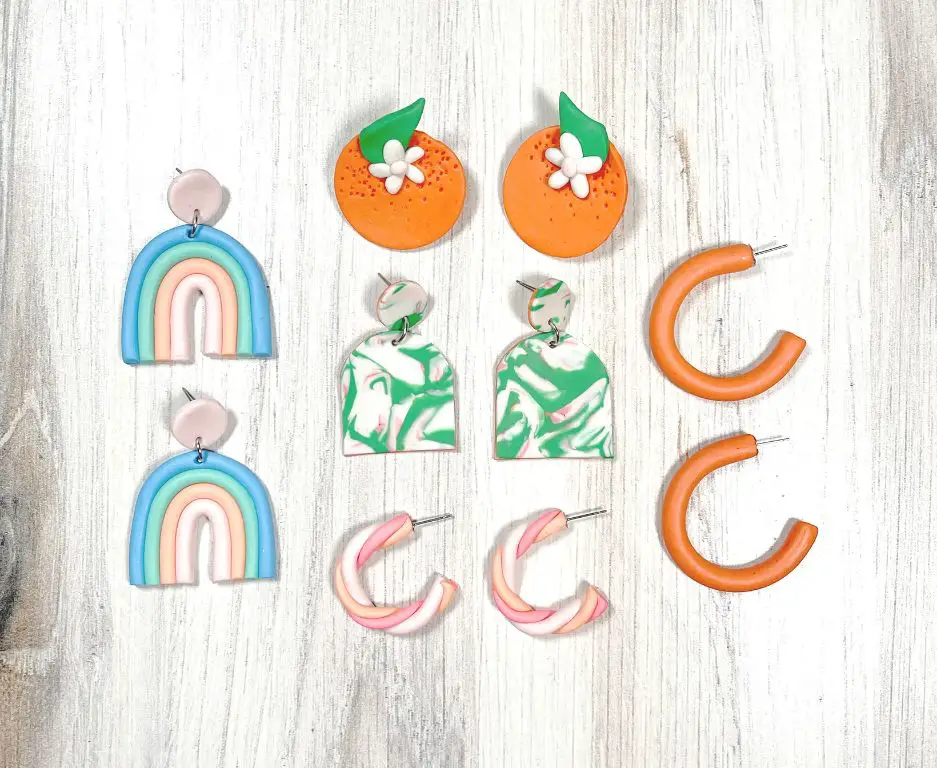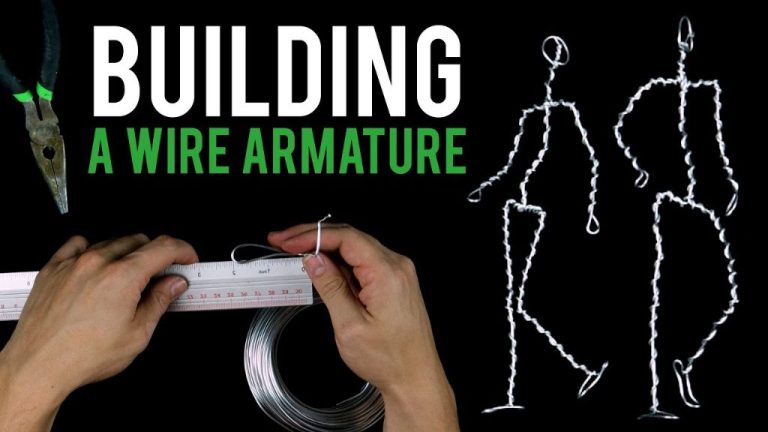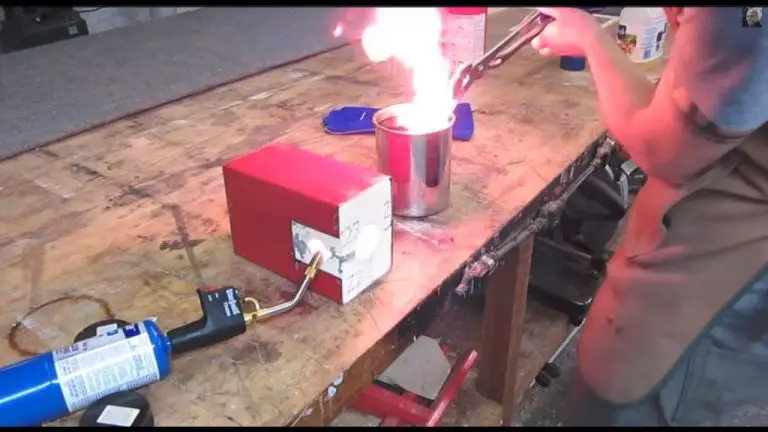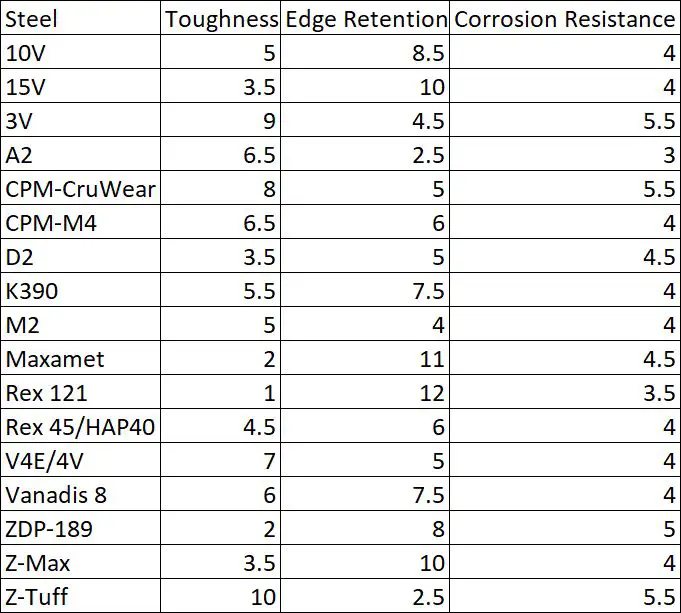Do Polymer Clay Earrings Break Easily?
Polymer clay is a type of modeling and sculpting clay that is made from polymers like polyvinyl chloride (PVC). It is a versatile material that can be shaped, molded, and hardened through baking. Polymer clay is popular for making jewelry, figurines, dolls, and other decorative items. Unlike natural clays like pottery clay, polymer clay can hold fine detail and does not need to be fired in a kiln. Once hardened through baking, polymer clay retains its shape and becomes durable while still maintaining some flexibility.
Polymer clay is an excellent choice for making earrings and other jewelry pieces. It comes in a wide variety of colors that can be blended and mixed to create original designs. The lightweight nature of polymer clay makes it comfortable to wear for extended periods. Earrings and pendants made from polymer clay are lightweight enough to wear comfortably all day.
However, some jewelry makers wonder if polymer clay is prone to breaking easily, especially for delicate jewelry like earrings. Does the flexible nature of polymer clay mean that it can become brittle and crack over time? This article will examine the properties of polymer clay and how jewelry design, the curing process, daily wear and tear, and care can impact the durability of polymer clay earrings.
Polymer Clay Properties
Polymer clay is made from PVC resin mixed with plasticizers and pigments. When cured through baking, it becomes a durable, flexible material that can be bent and shaped without breaking. According to The Blue Bottle Tree, properly baked polymer clay is quite flexible and durable enough that “you can bend it, flex it, and even roll it without breaking.”
The key factors that affect the flexibility of polymer clay are the brand/formula, conditioning, thickness, and baking time/temperature. Some brands like Sculpey III and Fimo Soft are naturally more flexible, while brands like SuperSculpey and Fimo Professional are firmer. Conditioning the clay by kneading before use also increases flexibility. Thinner pieces made with polymer clay will be more flexible than thicker pieces. Lower baking temperatures and shorter baking times will also result in softer, more flexible clay.
Overall, when handled properly, cured polymer clay can be very durable and long-lasting for jewelry and other decorative items. Pieces made of flexible polymer clay brands like Sculpey III can withstand reasonable daily wear and tear, being dropped or lightly impacted without breakage (source: Reddit). With proper care, polymer clay items can last for years.
Earring Design Considerations
When designing polymer clay earrings, there are a few key factors to consider regarding the thickness, shape and weight of the earrings:
Thickness: Most polymer clay artists recommend making earrings 2-3mm thick. Any thinner and they may be prone to breaking or warping. The thickness helps prevent cracking and provides durability for daily wear. According to discussions on Reddit, many aim for around 3mm thickness which is achievable on a pasta machine setting of around 3 [1].
Shape: The shape of the earring can impact durability. Earrings with thin dangling pieces or sharp corners may be more prone to snapping or chipping over time. Rounded shapes and smooth surfaces hold up better. Also avoid very long, thin dangling earrings.
Weight: Excessively heavy earrings can pull on earlobes over time. Most experts recommend keeping earrings lightweight, around 5-10 grams each, to prevent stretching of piercings [2]. The thickness of the clay contributes to weight, so aim for designs that maximize durability without unnecessary bulk.
Curing Process
Properly curing polymer clay is crucial for creating durable earrings that will stand the test of time. Polymer clay requires heat to solidify and cure. Most brands recommend baking at 275°F for 15-20 minutes per 6mm (1/4 inch) of thickness (1). For example, a 12mm thick piece should be baked for 30-40 minutes. It’s important not to under-bake the clay, as it will remain soft and flexible. Over-baking can cause scorching and an unwanted shiny finish.
When baking polymer clay earrings, lay them on a baking sheet lined with parchment paper or a Teflon sheet. Avoid letting them touch each other or the sides of the oven. Once cured, allow them to cool completely before handling. Proper curing guarantees hardened, durable polymer clay that won’t deform or stick to surfaces. With the right baking time and temperature, polymer clay earrings will maintain their shape and last for many years of wear.

Daily Wear and Tear
Polymer clay earrings can hold up well to daily wear and tear with proper design and curing. When creating the earrings, it’s important to avoid thin or delicate structures that could easily snap or break off (Are polymer clay earrings durable). The earrings should be made thick and sturdy enough to withstand the friction of taking them on and off each day.
Fully curing the clay is also key for durability. Polymer clay needs to be baked at the proper temperature and time to completely harden and strengthen the material (Is polymer clay water and weather resistant?). Properly cured clay will be more resistant to chipping or cracking from daily wear.
Simple, lightweight earring designs are less prone to damage compared to large, ornate pieces. The weight of the earrings can put more stress on the clay. Simpler styles with less protruding shapes tend to hold up better over time.
Cleaning and Care
Polymer clay earrings are delicate items that require special care when cleaning to avoid damage. Here are some guidelines for cleaning polymer clay earrings safely:
Use a soft, damp cloth to gently wipe the surface of the earrings. Avoid using any type of chemical cleaners like acetone or alcohol which can damage the clay (Source). The cloth should only be dampened with plain water.
Take care not to soak or saturate the earrings with water. Polymer clay can become brittle if overexposed to moisture. Just a light dampening of the cloth is sufficient.
Do not rub aggressively on the surface. Polymer clay can be prone to scuffing. Use a delicate touch when wiping.
Avoid getting water on any glazed areas as it may cause fogging. Carefully wipe around any glossy coatings.
Use a soft bristled brush to gently remove any dried dirt or debris. This is gentler than wiping.
Store earrings in a clean, dry place to prevent dust buildup. Tarnish can be removed by buffing with a soft cloth (Source).
With proper care, polymer clay earrings can be cleaned safely without damage. Avoid harsh cleaners, only use a damp soft cloth, don’t saturate, and wipe gently for best results.
Impact Resistance
Polymer clay is generally durable but can be prone to breaking if dropped from a height onto a hard surface. The impact resistance depends on the clay brand, formulation, curing method, and design of the piece.
According to discussions on Etsy forums, polymer clay items like earrings can break when dropped onto a hard floor, though basic polymer clays like Sculpey III tend to be more brittle than higher quality brands (Source). The fracture mechanics of polymer clay relate to its composition and internal structure. A well-cured clay will be more resistant to stresses.
To improve durability for earrings and pendants, choosing a high-quality polymer clay is recommended, along with proper curing, baking, and sealing. Using findings with some flex or cushion can help reduce the impact if dropped. Testing pieces by purposefully dropping from different heights onto hard floors can help assess real-world risks.
Comparisons
When compared to other clays used for making earrings, polymer clay has some distinct advantages and disadvantages.
Compared to air-dry clays like Aves Apoxie Sculpt https://www.avesstudio.com/products/aves-apoxie-sculpt-2-oz, polymer clay is generally more durable and will not dry out if stored properly. Air-dry clays can become brittle and fragile over time. However, air-dry clays do not require baking and will harden at room temperature. This allows for larger and more delicate earring designs.
In comparison to ceramic clays and pottery, polymer clay earrings will be more flexible and resistant to cracks and chips. However, ceramic materials allow for very fine detailing and have an attractive, natural finish. Polymer clay can achieve a smooth and glossy look, but does not duplicate the delicate look of fired ceramics.
Compared to metal clays like copper or brass, polymer clay is much more affordable and accessible to hobbyists. But metal clay earrings can achieve designs not possible with polymers, and have intrinsic value due to the precious metal content. The malleability of metal clay also allows for ultra thin, delicate shapes.
So while polymer clay has advantages in durability, cost, and ease of use, it lacks the delicate detailing of ceramic or metal clays. The ideal material depends on the needs of each jewelry maker and the desired earring designs.
Summary
In summary, the question of whether polymer clay earrings break easily depends on several key factors: the type of polymer clay used, the earring design, proper curing, daily wear and care, and impact during wear. To recap – polymer clay earrings can be quite durable if high-quality clay is used, if the design avoids thin or weakly joined areas, and if the clay is properly cured. However, they may be more prone to breaking than metal earrings and require gentle handling. The overall conclusion is that polymer clay earrings can last a long time with careful creation, curing, and wear – but they do require a bit more care than metal jewelry.
Conclusion
Final thoughts on polymer clay for earrings. Polymer clay does not break easily when properly cured and cared for. The material is quite durable and impact resistant, although thin or delicate designs may be at higher risk for breakage from rough handling. Compare to other common earring materials, polymer clay tends to hold up better than ceramic or glass in terms of preventing cracks and fractures. With good practices for baking, wearing, and storing polymer clay earrings, they can last for many years of regular use. So polymer clay makes an excellent choice for handcrafted earring designs.





